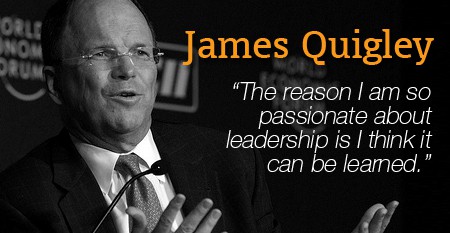The sustainability of any organization hinges on leadership’s ability to understand, embrace, and implement change. Whenever leaders are surveyed about what keeps them awake at night, “change” is usually at or near the top of the list. When change initiatives fail, so do leaders. When brands fall into decline, and organizations implode, it’s often due to a company’s inability to change. In today’s post, I’ll share three fresh approaches to change.
Try to envision a future without change… it’s nearly impossible to do, isn’t it? A world without change is a world frozen in time, a world stuck in a perpetual state of status quo – it’s certainly uninspired, and for me, it’s altogether unimaginable. While most of us hold a worldview that embraces, if not demands change, this isn’t always the case with business leaders. Sure, most leaders talk about change, but do they really lead it? Talking about innovation is not the same as bringing it to life.
[Tweet “A world without change is a world frozen in time, a world stuck in a perpetual state of status quo”]The best evidence of the importance of change leadership is what occurs in its absence– mediocrity, irrelevance, and ultimately, obsolescence. Leaders concerned with the cost of change should be far more concerned about the cost of not changing. The best of human ingenuity and accomplishment are experienced through change. To learn, create, advance, develop, and sustain, we must change. If you accept this premise as true, then my question is this: why do so many businesses struggle with the practice of change? The answer is regrettably obvious– many leaders are simply inept at leading change.
Following are three ideas, which will help you lead change more effectively:
#1: Pull Change Forward
Stop talking about change as a theoretical future state and pull it forward into the present. Change is the path to the future, but the future isn’t some ethereal, distant event – it begins in just a fraction of a second. While all great leaders must navigate the present, they must do so in anticipation of the future. The best leaders understand the present is nothing more than a platform for the envisioning of, and positioning for, the future. If you want to lead more effectively, shorten the distance between the future and present.
#2: Change Is Not a Process – It’s A Mindset
Leading change is far more than a process– it’s a cultural mindset. Change requires leaders to embrace dissenting opinions, give voice to positional differences, and to constantly challenge static thinking. While leading change does require skill, it first requires a decision to value change, and then it demands the courage to act. Leadership isn’t about being right; it’s about achieving the right outcomes. Change must be more than a buzzword used by leadership – it must be embedded within the strategic vision, cultural design, and operating fabric of the enterprise. Leaders who protect the status quo through control must surrender to change in order to secure the future for their organization.
#3: Leadership IS Change
If there are no visible signs of change in your organization, I would suggest your leadership isn’t leading. Change must become a leadership competency and priority. Leaders who fail to deliver change will be replaced by those who can. Leadership is nothing if not fluid, flexible, and forward-moving – none of these things can occur without an emphasis on change. In fact, I would go so far as to say “leadership IS change.”
Bonus: This is where it gets tricky – not all change is good. Just as a lack of change can bring demise, ill-conceived change, change solely for the sake of change, or change driven by hidden/self-serving agendas can ruin even category dominant brands. Make sure the drivers for change are in alignment with corporate values and vision, serve the best interests of the consumer, and lead to a higher purpose.
If you’re in a leadership role, it’s in the best interest of the organization, and those you lead, to embrace change at every level.
Thoughts?
Other Posts On Change/Innovation







